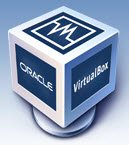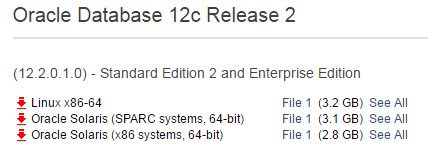 I was asked a question on Twitter today, but it is similar to the types of questions I get asked quite a lot, so I thought I would write this general answer, rather than try to answer in 140 characters. Remember, this is just my opinion and it’s coming from an Oracle DBA perspective. 🙂
I was asked a question on Twitter today, but it is similar to the types of questions I get asked quite a lot, so I thought I would write this general answer, rather than try to answer in 140 characters. Remember, this is just my opinion and it’s coming from an Oracle DBA perspective. 🙂
Should I learn Cloud?
More specifically I’ve had people ask me, “Should I learn AWS or Oracle Cloud?” When you ask that question, I am tempted to respond with a question like, “What do you think there is to learn?” Are you planning to learn the interfaces or the APIs? Let’s narrow things down *a lot*. If you are asking about learning to running Oracle Databases in the Cloud, I would say you are probably going to end up with a couple of choices over time.
- Do everything yourself. You need all the same skills as you do now, because the cloud provider is just providing kit. It’s just another hosting company.
- Let them do everything for you. If it’s a managed service, there may be significantly less for you to do.
That is of course being a little simplistic. Each cloud provider will have it’s own ways of doing some things, but you should be able to pick that up really quickly.
The main focus for good cloud implementations of Oracle databases is more to do with architectural concerns. Planning networking, security, how services will interact between the cloud and on-prem, which services should you pick to deliver the results you want, interactions between cloud services and even cloud providers.
- If you are not currently performing some architectural-type role, you aren’t going to be a DBA one day and a “cloud architect” the next.
- If you are not currently looking after your company’s virtual infrastructure, you probably won’t be looking after your company’s cloud account and get to use any of the tools directly.
- If you are not currently doing network and sysadmin work in your company, it is unlikely you will be involved in any of the planning for a move to the cloud.
So I come back to my initial response, with specific reference to Oracle databases on the cloud, “What do you think there is to learn?” If you are already an experienced DBA, then there isn’t a lot you need to learn about running Oracle on the cloud. It’s not the interface or even the APIs for any one provider that matter. It’s the technologies the other cloud services provide that matter. Doing some of this stuff on the cloud is a lot simpler than building it yourself. 🙂
Can you recommend a book I should read to help me learn “The Cloud”?
There are books out there that discuss cloud computing in general terms, as well as all the projects that make up some of the cool new cloud services, but I don’t think that is what you are asking for. I think you want a book that will teach you a new job in record time. That book does not exist.
I’m an E-Business Suite DBA. How do I learn to be an Oracle Cloud Apps DBA?
You don’t. Your job has gone. Unless you are one of the very few companies in the world that run Oracle Cloud Apps on prem, you don’t get to touch any of this stuff. It’s Software as a Service (SaaS). My company uses Oracle Cloud Apps and I can’t connect to our databases or WebLogic servers. It’s all hidden on the cloud and Oracle look after everything to do with Oracle Cloud Apps. For SaaS it’s the functional people that matter, not so much the techies.
There is development work for data transfers and custom reporting, but the EBS DBA role that used to exist isn’t really there as part of Oracle Cloud Apps. If you were planning to transition from an EBS DBA to an Oracle Cloud DBA you have a big shock coming.
Update. There seems to be some confusion about what I’m saying here. If your company stays with EBS, you still have a job. If your company transitions to EBS on Oracle Cloud, a new service from Oracle, you still have a job as it is IaaS, not SaaS. If your company transition from EBS to Oracle Cloud Apps, there is no Oracle Cloud Apps DBA role. You will have to find a different company that still uses EBS, or change roles.
Conclusion
The DBA job has changed a lot over the last 20+ years I’ve been doing it. The cloud, especially Software as a Service (SaaS) will have a huge impact on the “conventional” DBA job. Relational databases will remain important for some time, but they are no longer considered the right tool for every job. You’ve just got to roll with the punches. 🙂
I think the question you are really asking is, “What new skills do I need to learn?” Tanel Poder‘s response was really good and sounds like a good place to start.
“Learn Python for scripting, Hadoop for non-transactional data & Google BigQuery to see what the future is like.”
Here’s some of my ramblings on the subject.
As a DBA, what do I need to learn next?
So stop asking, “Should I learn Cloud?”, because it doesn’t make sense. Start asking questions like, “What new skills do I need to learn?” You may learn them while using a cloud service, but that’s not the same as “learning the cloud”. 🙂
Cheers
Tim…
PS. I understand cloud providers have loads of different services, but realistically you are not going to magically be an expert in all of them overnight. If you are a Hadoop person, you will try the Hadoop implementations of a few providers. If you are an Oracle DBA, that will be your focus on day one.
 My website has been using HTTPS for over 18 months now. A couple of months ago I came across Let’s Encrypt and thought, “Free Certificates? That’s interesting!”, so I gave it a shot for some other stuff I look after, just to see how I got on with it.
My website has been using HTTPS for over 18 months now. A couple of months ago I came across Let’s Encrypt and thought, “Free Certificates? That’s interesting!”, so I gave it a shot for some other stuff I look after, just to see how I got on with it. A couple of articles have crept out over the last few days that relate to online operations on Oracle Database 12c Release 2 (12.2). Both of them are pretty small in terms of what you have to do, but are pretty awesome in terms of impact, so I’m giving them the official thumbs-up! 🙂
A couple of articles have crept out over the last few days that relate to online operations on Oracle Database 12c Release 2 (12.2). Both of them are pretty small in terms of what you have to do, but are pretty awesome in terms of impact, so I’m giving them the official thumbs-up! 🙂 I was asked a question on Twitter today, but it is similar to the types of questions I get asked quite a lot, so I thought I would write this general answer, rather than try to answer in 140 characters. Remember, this is just my opinion and it’s coming from an Oracle DBA perspective. 🙂
I was asked a question on Twitter today, but it is similar to the types of questions I get asked quite a lot, so I thought I would write this general answer, rather than try to answer in 140 characters. Remember, this is just my opinion and it’s coming from an Oracle DBA perspective. 🙂 If you follow me on social media, you will know I’ve put out a few
If you follow me on social media, you will know I’ve put out a few 
 VirtualBox
VirtualBox Oracle 12cR2 (12.2) has been around for a while on the cloud, but for many people it doesn’t really exist until they’ve downloaded it and run it on an “on-prem” server or a VM on their PC.
Oracle 12cR2 (12.2) has been around for a while on the cloud, but for many people it doesn’t really exist until they’ve downloaded it and run it on an “on-prem” server or a VM on their PC.